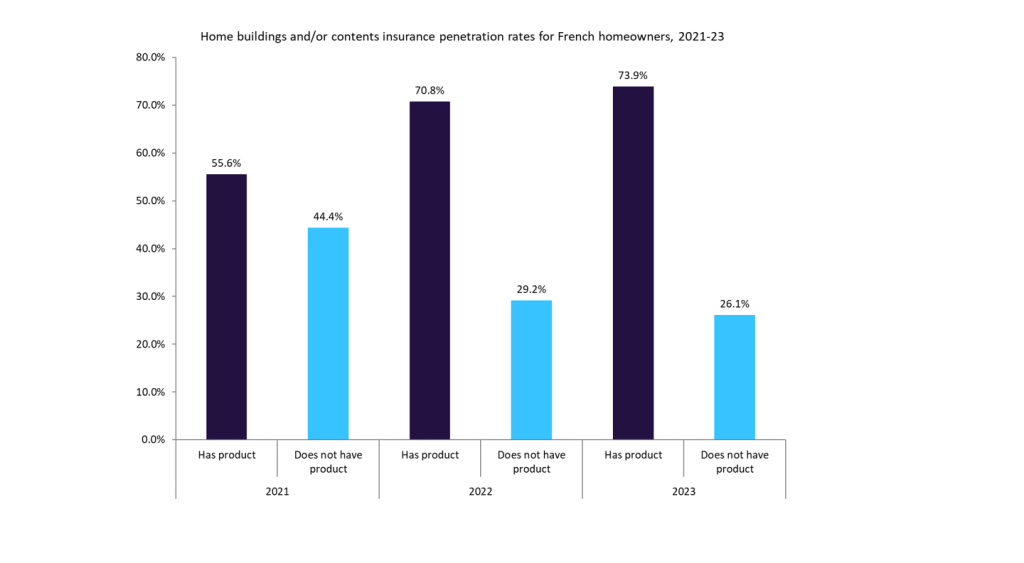
The digital revolution, increasing consumer expectations and the growth of FinTech startups mean the appetite for insurance innovation is higher than it has ever been.
Rapid strides in data analytics and significant regulatory change also mean sticking with the status quo is not an option for life and health insurance players worldwide.
Given these market forces, Life Insurance International (LII) has created the LII Insurance Innovation Tracker to independently evaluate, score and profile the world’s leading life and health insurance innovations. The list of innovation profiles will be built up over the coming weeks.
Based on a rigorous scoring methodology and expert insight, Singapore-based data analytics platform, FitSense, is this month’s leading insurance innovator with an overall score on the LII Innovation Tracker of 4.5. See graph below.
Why FitSense is top of this month’s LII’s Insurance Innovation Tracker
FitSense is a data analytics platform working with insurance companies to personalise life and health insurance for anyone with a smartphone or wearable device. It achieved a score of 4.5 – ranking it top of this month’s LII Insurance Innovation tracker.
How well do you really know your competitors?
Access the most comprehensive Company Profiles on the market, powered by GlobalData. Save hours of research. Gain competitive edge.

Thank you!
Your download email will arrive shortly
Not ready to buy yet? Download a free sample
We are confident about the unique quality of our Company Profiles. However, we want you to make the most beneficial decision for your business, so we offer a free sample that you can download by submitting the below form
By GlobalDataThe data analytics platform was ranked above related offerings, such as Quantifyle and Beam Technologies, because on the impact scale it has the potential to significantly improve the user and insurance provider’s experience, as well as a strong geographical and user segment reach.
In term of the degree of innovation, the graph shows that FitSense fits in the incremental innovation quadrant. However, if it can achieve more scale and impact by linking up with distribution partners and achieving critical mass, it could become a true insurance disruptor.
Similar plays
Asked about FitSense, Ian McKenna, director of the London-based Finance & Technology Research Centre and a member of Life Insurance International’s editorial advisory panel, says: "There are a lot of similar plays in the marketplace now.
McKenna explains that insurance has been behind the digital curve there is now a strong convergence between insurance, biometric and wearable technology.
McKenna warns that the challenge insurance start-ups like FitSense is being able to access a strong distribution channel. He says: "One of the issues is that start-ups can be very innovative but if they are not able to distribute to a critical mass in a short time, they will run out of cash.
The full criteria and methodology used to assess initiatives in LII’s Insurance Innovation Tracker is available below the LII Innovation Tracker graph.
![]()
LII innovation tracker methodology and scoring criteria
Innovation categories for LII innovation tracker:
1. Product
2. Distribution channel
3. Market segment
4. User experience eg. innovation improves ease of claiming / purchasing insurance cover
5. Data analytics tool
6. Marketing eg. creative and original approach to engaging audience
7. Insurance FinTech start-up that has moderate / high potential to address an industry barrier eg. lack of consumer engagement with insurance
www.getfitsense.com
FitSense www.getfitsense.com is a data analytics platform working with insurance companies to personalise life and health insurance for anyone with a smartphone or wearable device
Innovation category:
FitSense is an data analytics tool positioned at the hub of life and health insurance, wearable technology and biometrics.
Other related insurance innovations that FitSense can be compared with: Quantifyle and Beam Technologies
Innovation scoring criteria based on a criteria of 1-10 – with 1 being not innovative as project represents the next logical step; and 10 being a unique application that is radical and paradigm-shifting.
– Impact: Will it significantly improve the user experience?
In theory, yes. By gathering data from consumers’ mobile phones and wearable devices, FitSense says its data analytics platform allows insurance companies to personalise life and health insurance for anyone with a smartphone or wearable device.
This flexibility will be crucial for FitSense’ business model and adoption rate by insurers. However, given that it is currently working with 8 insurers, it is too early to say how will change the user and insurance provider’s experience.
Impact score out of 10 = 4. FitSense has plenty of potential, but has much to prove
Impact: Will it significantly improve the insurance provider’s experience?
FitSense can potentially change the way in which the insurer engages with the customer by shifting from paying out claims to risk management, and from a one-off ‘ grouch’ purchase to continuous engagement with the customer
Providing personalised insurance is the Holy Grail for insurers and financial services providers currently.
Similarly, the insurance industry is obsessed with gathering data about its customers for risk management, personalisation and engagement purposes. Yet no insurer or data analytic provider has yet got both personalisation and integrating data right from mobile and wearable devices.
FitSense says its data model makes it possible to integrate wearable and mobile data from different manufacturers with traditional enterprise data into a coherent whole to provide actionable insights to insurers. Furthermore, its platform is designed to be extendable and modular.
Overall, it’s too early to say whether insurance start up FitSense will significantly improve the insurance provider’s experience. The potential is there, but it needs to link up with more insurers and distributors to shift the life and health insurance industry.
Impact score out of 10 = 6. FitSense could be a game-changer if more insurers start using it
Impact : Does it have a strong geographical market and user segment reach?
Yes. FitSense potentially has a global user base of life and health insurers to offer its data competency service to. But the devil with such innovations is usually in the detail.
FitSense still has to prove it can integrate large volumes of mobile data from different manufacturers.
There is also likely to be privacy and trust concerns among users and insurance providers that wearable data shared with insurers does not discriminate consumers.
FitSense says privacy-protective capabilities are built into the platform, with data sets decoupled from personal identity information.
There is a clear convergence between wearable data and providing personalised insurance. For example the number of connected wearable devices worldwide is expected to increase from 109 million in 2014 to 578 million in 2019, at a CAGR of 39.60%, according to the Cisco Virtual Network Index forecast in 2015.
Impact score out of 10 = 3. FitSense needs to scale up and work with more insurers and distribution partners to unlock the global market potential
Average impact score: 4.3
Degree of innovation: Is it original?
The concept of a data analytics platform that enables companies to personalise life and health insurance is not a new one. For example, insurance tech start-up Quantifyle allows consumers to use data from wearables and private records to earn tailored and better priced insurance.
Innovation score out of 10 = 4.
The concept behind FitSense is not unique – but its process is well executed and has the potential to have a strong geographical and market segment reach.
Furthermore, its data model makes it possible to integrate wearable and mobile data from different manufacturers.
Degree of innovation: Is it market-changing and will it be long lasting?
There is great interest by the insurance industry in using wearable technology to assess risk and create more personalised insurance. However, the challenge for insurers will be able to deliver tangible consumer benefits from the data without being perceived to discriminate against consumers and infringe privacy rights.
FitSense currently has 1 sales partner and 8 insurers. This is commendable, but will need to be substantially grown
Innovation score out of 10 =6. It is inevitable that insurers will partner with data analytic providers like FitSense in future. Agility, speed to market and distribution will be crucial in executing insurance innovations.
Degree of innovation: Does it use new technology or processes?
FitSense improves existing technology and processes. FitSense says its proprietary algorithm normalises data across a wide range of activity-tracking to provide a single-comparable risk factor.
While the FitSense team have developed an activity score for their platform in collaboration with researchers from the National University of Singapore’s School of Public Health, insurance tech start-up Quantifyle has also created a momentum score to motivate users.
Innovation score out of 10 = 4. FitSense’s technology does not appear particularly new. But the real innovation will come from its execution.
Average innovation score: 4.7
Total innovation score: 4.5 Conclusion – FitSense scores 4 overall and is an incremental innovation because of its potentially global impact for users and providers in life and health insurance. It improves existing practice and technology global reach and the degree of innovation
Data analytic insurance innovations to compare with FitSense
1. Quantifyle http://www.quantifyle.com/ aims to enable consumers to use data from wearables and private records to earn tailored and better priced insurance. It sells itself as a wellbeing app that motivates people to make a commitment to an exercise plan and stick to it.
– Like FitSense, it enables users to earn rewards.
– It can help insurers because its behavioural database and focus on motivation means insurers could potentially pay less income protection claims as policyholders recover more quickly thanks to Quantifyle’s help.
Impact: Will it significantly improve the user experience?
Impact score out of 10 = 3 . Potentially yes, like FitSense. But it is still in the testing phase.
Impact: Will it significantly improve the insurance provider’s experience
Impact score out of 10= 5. The insuance industry is obsessed with data. But nobody has quite got it right.
Impact : Does it have a strong geographical market and user segment reach?
Impact score out of 10= 3. Yes. Like FitSense, Quantifyle potentially has a global user base of life and health insurers to target. But since it’s still in the testing phase, it is too early to say.
Average impact score: 3.7
Degree of innovation: Is it original? Innovation score out of 10 =3.
No, this space is becoming more competitive and FitSense is potentially a strong competitor.
Degree of innovation: Is it market-changing and will it be long lasting? Innovation score out of 10 =4
Degree of innovation: Does it use new technology or processes? Innovation score out of 10 =4 Average innovation score: 3.7
Total innovation score for Quantifyle: 3.7
2. Beam Technologies wants to provide policy holders with the essentials to keep their teeth as healthy as possible. Its insurance plan includes giving its brush to customers to get better data and help keep premiums reasonable.
Impact: Will it significantly improve the user experience?
US provider Beam Technologies https://www.beam.dental/plans reportedly targets small and medium-sized businesses, and is comparable to dental insurance from other providers. It is said that its policies are about 10% to 25% cheaper.
Impact score out of 10 = 4. The Beam toothbrush reportedly sells for approx $49. There’s no reason for the average person to pay extra for a luxury.
Impact: Will it significantly improve the insurance provider’s experience
Beam Technologies means better risk management and engagement for insurers with policyholders. For example, by providing app-style enrolment in under 4 minutes
Impact score out of 10 = 4
Impact : Does it have a strong geographical market and user segment reach? Impact score out of 10: 3.5
Average impact score: 3.8
Degree of innovation: Is it original? Innovation score out of 10 = 4.
Degree of innovation: Is it market-changing and will it be long lasting?
Innovation score out of 10 = 4. It is too early to say if I will impact the US dental insurance market. It’s a step in the right direction
Degree of innovation: Does it use new technology or processes? Innovation score out of 10 = 3
Average innovation score: 3.9
Total innovation score for Beam Technologies: 3.9
Research notes on scoring
0-5: Incremental innovation
Initiative exhibits at least one of the following:
- Low potential to address an important problem or a critical barrier in the insurance industry
- Refinement of existing industry approaches or practices
- Reach eg.UK v global
- Impact on user and provider eg. faster underwriting and opens up new market segment
- Degree of innovation eg. incremental, substantial transformative
6-10: Radical innovation
- – High potential to address an important problem or a critical barrier in the insurance industry
- Transformative, paradigm-shifting product / service/ new provider that seeks to alter current industry practices.







